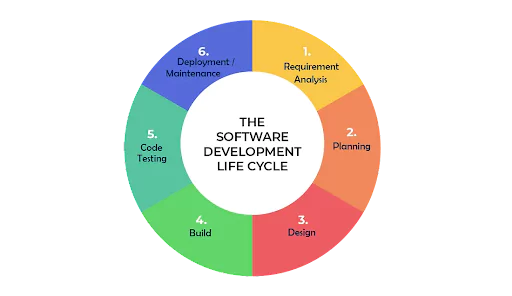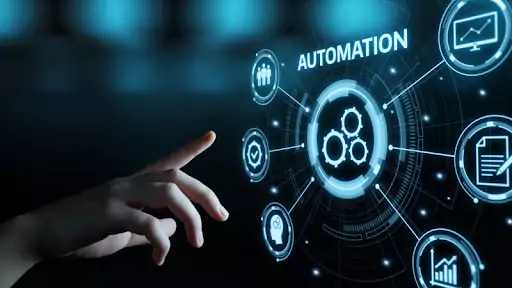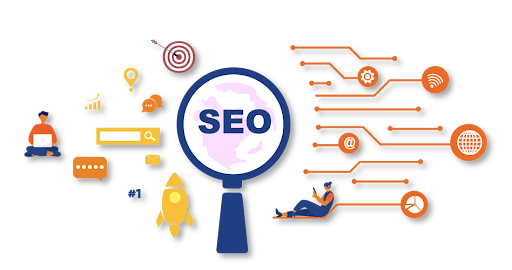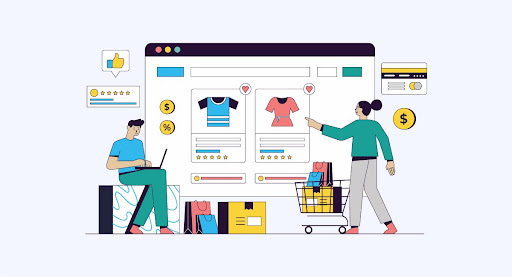Top Trends in Software Development for 2024
The software development environment is constantly changing. That is why it is important for businesses and developers to stay up-to-date with the evolving trends. In 2024 and onto the future, some of the most crucial trends will define the face of software development, that will transform many industries and influence development.
1. AI and Machine Learning Integration
Advancements in Natural Language Processing
In 2024, software development still relies on Natural Language Processing (NLP) which is currently an existing game changer. NLP algorithms result in the design of devices that understand and process human language, leading to the development of advanced chatbots, virtual assistants and sentiment analysis tools. Businesses are using NLP as a way of automating customer service, analyzing feedback, and personalizing experiences for users.
Use of AI in Software Development powered by Automation.
AI-powered automation is how the process of software development is changing into automation of repetitive tasks, optimization of code and pattern recognition in the data. By using machine learning algorithms developers can accelerate the loop that includes testing, debugging, and deployment thus getting software products to the market faster and of better quality.
2. Implementing Blockchain in Software Development.
Decentralized Applications (DApps)
Blockchain technology advances software development by increasing the DApps (decentralized applications) proportion. DApps are decentralized and, hence, they do not require any intermediaries. Instead, they provide a higher level of security and transparency. In 2024, the sectors of finance, supply chain, and healthcare, all are implementing the technologies of blockchain DApps for smooth operations and credibility.
Smart Contracts Integration
Such a kind as smart contracts tend to become very popular among software developers. Automating the execution and enforcement of contracts through smart contracts, attenuates business processes, lowers costs, and diminishes the risks tied to traditional contract management.
3. Quantum Computers and Software Engineering.
Harnessing Quantum Computing Power
Quantum computing is capable of bringing big improvement for software development especially in those cases of solving optimization problems and simulating molecular structures. In 2024 , the developers are studying quantum algorithms that will facilitate faster data analysis, cryptography and the machine learning operations , therefore opening new opportunities in various industries.
Applications in Cryptography and Data Analysis in the Field
Quantum computers are able to perform complex calculations of unimaginable speed, which make them capable of translating cryptography. Quantum-resistant algorithms of cryptography are being sent to the market to encrypt sensitive data against quantum opponents. This will ensure robust security measures in software applications.
4. Low-Code and No-Code Platforms
Empowering Citizen Developers
Low-code and no-code platforms democratize the process of developing software by empowering citizen developers – individuals with no or basic programming experience – to produce fully functional apps. These platforms include interfaces which are user-intuitive and with pre-built components, making software development a “democratized” process and reducing the time to deliver custom solutions.
Accelerating Software Development Lifecycle

Through the low-code and no-code platforms software development process is accelerated by decreasing the development time and reducing costs. In 2024, there will be huge engagements of businesses in the platforms for the rapid prototyping, iterations, deployments of applications. This will give the businesses a chance to adopt agile development practices and innovation that cut across sectors.
5. Cybersecurity Integration within Software Development.
Threat detection and prevention that is proactive.
An integration of cybersecurity into the software development life cycle becomes a priority in the light of the emergence of new cyber threats. In 2024, software developers use AI algorithms like anomaly detection, behavior analytics, and threat intelligence to evaluate the applications. They implement proactive threat detection and prevention mechanisms to enhance the security of the software applications.
Secure Software Development Lifecycle (SSDLC) Implementation Procedures
The components of Secure Software Development Lifecycle (SSDLC) focus on security at every step, right from the stage of designing to that of deployment. Security software standards, regular security audits and robust authentication and access control measures provide for the security of applications against cyber attacks to the developers.
6. Edge Computing and IoT Integration is unified through the harnessing of green energy in the urban centers.
Real-time Data Processing at the Edge Supervision
Edge computing allows data processing and analysis in real-time much closer to the data source, decreasing latency and the bandwidth usage. In 2024, edge computing is combined with IoT devices which are a part of industries like manufacturing, healthcare, and transportation, and they become smart enough to handle their autonomous operations and generate actionable insights at the edge.
IoT device capability and security are key points to be improved.
As edge computing technology is applied, IoT devices would achieve better performance and security through auto data processing and decision-making locally. In 2024, a group of developers work on developing edge computing architectures that are both secure and scalable, ensuring the data transferred between IoT devices and cloud services remain protected and confidential.
7. PWAs are Progressive Web Applications.
Strengthening the E-Commerce Mobile Experience by Merging the Web and Mobile Apps
PWAs are based on Web technologies such as HTTPS, a service worker to run a JavaScript in the background, and a manifest which informs users what the app icon will look like. They can provide native app functionality. Businesses are using PWAs in 2024 in order to provide fast, dependable and captivating user interactions, using the system capabilities such as the offline functioning, push notifications and installing them on the home screen.
Offline Functionality and Enhanced User Experience
PWAs incorporate offline features that empower users to use the content and perform tasks with no internet connection. Caching assets and data in the local environment is what PWAs are doing to deliver superior user experiences and thus improve users’ engagement, which translates into higher conversion rates and customer satisfaction.
8. The principle of containerizing and creating distributed microservices architecture.
Scalability and Resource Efficiency
Containers and microservices architecture make it possible for developers to design and develop software applications suitable for scaling up and using a limited number of resources. Containers are built by encapsulating applications and dependencies into lightweight packages, thus the development process gets more flexibility, scalability, and portability, making it simpler to deploy and manage such complex software systems.
Streamlined Deployment and Management
Kubernetes and other container orchestration platforms provide the ability to simplify the deployment and management of containerized applications. In 2024, it is the perfect time for businesses to utilize containerization and microservices architecture in order to achieve rapid iteration, fault tolerance, and auto-scaling capabilities, which in turn optimizes agile development practices and continuous delivery pipelines.
9. DevOps and CI/CD.
Automation In Software Development Processes

DevOps practices and CI/CD pipelines automate software development lifecycles by integrating disciplines that were traditionally done separately.
from various activities such as design, test, deploy, and monitor. In 2024, collaboration, transparency and automation is the key for companies, resulting in the abolishment of operational silos and the condensing of the release cycle.
Ready for instant deployment of software updates
CI/CD pipelines help in implementing and deploying the changes fast, making users receive the latest features and improvements all the time. Through including testing, validations, and deployments, developers reduce the downtime and minimize the risks/errors associated with the software releases, thus increasing innovation and satisfaction for the customers.
10. The combination of Virtual and Augmented Reality (VR/AR)
Immersive User Experiences
AR and VR open up new opportunities in various industries – gaming, entertainment, education, healthcare, etc. In 2024 they applied AR and VR to produce interactive simulation, virtual tour, and immersive storytelling therefore opening new prospects for engagement and innovation.
Implementing This Beyond Gaming, and Entertainment
AR and VR technologies are not restricted just to gaming and entertainment areas, the technology transforms industries like education, health care and architecture. In 2024, enterprises undertake AR-based training modules, engage in virtual medical consultations, and employ architectural visualization tools in a bid to employ the power of immersive technologies to disrupt traditional workflows and experiences.
11. Software Development: Ethical and Sustainable Practices
Understanding Bias and Fairness in AI Algorithms
In 2024 developers place emphasis on implying the ethical issues in AI algorithms and counteracting the bias, unfairness, and also the non-transparency of the models. In place, through issuing of strong governance structures and ethical guidelines, developers of AI driven solutions ensure that they abide by standards of fairness, accountability, and transparency to earn the trust and credibility of the users and other stakeholders.
Eliminate The Environmental Consequences of The Software Solutions
Sustainable software development means diminishing the environmental footprint of software product life cycle, from energy consumption to CO2 emissions. In 2024, developers will use the green technologies, carry out economic resources using, and improve green computing principles playing a role in environmental sustainability and corporate social responsibility.
12. Cross-Platform Development Frameworks
Xamarin, Flutter, and React Native are the three basic platforms one can use to build cross-platform mobile applications.
The opportunity to programme using cross-platform frameworks like Xamarin, Flutter, and React Native, which make it possible for developers to create native-like applications on multiple platforms with a single codebase, is one of the advantages for enterprises. In 2024 businesses exploit cross-platform development toolkits to cut development costs, accelerate time-to-market, generate users across iOS, Android, and web.
Simplifying the Undertaking of App Development Across Various Platforms
Platform-independent frameworks with a single codebase for multiple platforms present an easy way of developing apps once and provision them everywhere. Through the use of shared code, resources, and libraries among platforms, the developers obtain consistency, maintainability and scalability, which streamline development and maintenance of applications.
13. Data Protection and Compliance
The compliance measures under GDPR and CCPA.
In 2024, there is a trend of the data privacy regulations such as GDPR (General Data Protection Regulation) and CCPA (California Consumer Privacy Act) to develop throughout the software development process. Developers build such privacy-by-design techniques, data encryption tools, and user consent mechanisms to meet the requirements of the regulations and also to safeguard the privacy rights of the users.
Data Encryption and User Privacy Protecting
Data encryption and user privacy protection systems are designed to keep sensitive data out of reach of unauthorized persons or individuals with ill intentions. By 2024, developers use encryption algorithms, secure communication protocols and data anonymization techniques to safeguard the data at rest and data in transit, which improves the applications’ trustworthiness and users’ confidence.
14. Conclusion: The Importance of Innovation in the Software Development Process
Summarizing, the 2024 IT landscape is dominated by fast technological progress, new technology launches, and shifting industry patterns. Through adoption of the emerging technologies such the Artificial Intelligence, Blockchain and Edge Computing businesses and application developers can manufacture new prospects, drive digital transformation and create the solutions that deliver the services to the users and industries.
FAQs
- What are the key considerations for businesses when adopting AI and machine learning in software development?
- How can blockchain technology revolutionize industries beyond finance and cryptocurrency?
- What role does data privacy play in the development of software solutions, especially in light of regulatory frameworks like GDPR and CCPA?
- What are the challenges and opportunities associated with integrating edge computing and IoT devices in software development?
- How can businesses ensure the ethical use of AI algorithms and machine learning models in their software solutions?








